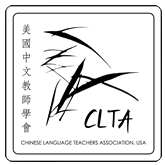Articles
A Learner Corpus Study of L2 Lexical Development of Chinese Resultative Verb Compounds································································ 1
Jie Zhang, University of Oklahoma
The Gap in the Use of Lexical Cohesive Devices in Writing between Native Chinese Speakers and Second Language Users····························· 25
Shouji Li, Massey University
Understanding Language Anxiety and Ways to Alleviate it in Mandarin Classrooms··································································· 49
Ying Zhou, St. Olaf College
利用网络喜剧小品培养初级语言能力·········································· 65
吴永安, University of North Florida
对外汉语纠错反馈研究的单位界定及过程分解分析·························· 87
靳洪刚、章吟, Hamilton College
Review
Chinese Matters: From Grammar to First and Second Language Acquisition.
Edited by Chris Wilder and Tor A. Afarli.································· 117
Nan Meng
2014 年第三期论文摘要
A Learner Corpus Study of L2 Lexical Development of Chinese Resultative Verb Compounds
Jie Zhang, University of Oklahoma
The Chinese resultative verb compounds (RVCs) are an important yet challenging compound structure for second language (L2) Chinese learners. However, there is little understanding about how the lexical features of RVCs emerge and develop in L2 Chinese learners. Drawing on written essays in an L2 Chinese learner corpus, this study investigated the lexical development of RVCs in frequency, component versatility, and accuracy. The findings revealed that learners acquired RVCs in three phases: the whole-word formula phase, the emergence of compound awareness phase, and the solidified compound awareness and lexical development phase. The study found that different types of RVCs demonstrated divergent patterns of development and posed different acquisition difficulties for learners, thus calling for different pedagogical approaches.
汉语结果复合动词是汉语作为第二外语习得中既重要又富有挑战的一种复合词结构。然而目前对这一重要词汇结构习得过程的认识非常有限。通过考察汉语学习者作文语料库,本文从复合词词频、成分多样性和准确性三方面研究了汉语作为第二外语的学习者在习得结果复合动词时的词汇发展过程。研究发现结果复合动词的习得分为三个阶段:整词公式阶段、复合词意识产生阶段、复合词意识固定和词汇知识发展阶段。研究还发现不同种类的结果复合动词的发展规律各有特点,从而对学习者提出不同的挑战,需要采用相应的教学对策。
The Gap in the Use of Lexical Cohesive Devices in Writing between Native Chinese Speakers and Second Language Users
Shouji Li, Massey University
This study investigates differences in the use of lexical cohesive devices in the writing of native and second language speakers of Chinese using a corpus-based approach. The research employs two small-scale corpora: a corpus of 50 native-speaker Chinese texts written for the National College Entrance Examination (NCEE) and a corpus of 50 second language user texts written for the HSK (the Chinese language proficiency test). In comparing the analyses of the two small-scale corpora, the findings show a low frequency in the use of important lexical devices by second language writers, devices such as the superordinate and hyponym relation, simple paraphrase, and complex paraphrase. In a bond density analysis (Hoey, 1991), the ratio of bond-forming to Non-bond forming sentences in the HSK texts is much lower than that in the NCEE texts. These findings suggest that learners of Chinese have a lower level of lexical competence and lack the capacity to create adequate and effective cohesive links across the text.
本文运用语料库语言学的研究方法,对中国学生以及汉语留学生所写的作文进行了对比分析,以期发现他们在使用词汇衔接手段上的差异。本研究使用两个小型语料库, 一个是由 50篇中国学生高考作文组成的NCEE语料库, 另一个是由50篇汉语留学生HSK作文组成的HSK语料库。通过对这两个小型语料库的统计分析,笔者发现汉语留学生使用一些重要词汇衔接手段的频率很低,这些手段包括上下义重复、简单与复杂重述。从构成衔接点的密度分析来看, 在HSK语料库中,能形成衔接点的句子数量与不能形成衔接点的句子数量的比例明显低于在NCEE 中的比例。这些结果表明汉语留学生的词汇能力偏低, 缺少在篇章中构建恰当、有效的词汇衔接的技能。
Understanding Language Anxiety and Ways to Alleviate it in Mandarin Classrooms
Ying Zhou, St. Olaf College
Language anxiety affects second language learning. Understanding language anxiety and how it plays a role in language learning is the first step toward addressing the issue. Language anxiety stems from different sources. The current paper summarizes six common sources of language anxiety from previous literature and also discusses the sources particularly relevant to learning Mandarin as a second language. The author then proposes ways to alleviate language anxiety from each source and discusses how to reduce language anxiety in acquiring the four skills, as well as in grammar and vocabulary learning. The paper intends to provide pedagogical suggestions to language teachers on how to help learners reduce their language anxiety and improve their language learning experience.
语言焦虑影响第二语言学习。了解语言焦虑及其在语言学习中的具体反映是应对语言焦虑的第一步。语言焦虑来源于多方因素。本文首先总结了文献中提出的语言焦虑六大来源,然后讨论了中文第二语言学习中特有的语言焦虑来源。随后,本文就语言焦虑的各个来源,提出了语言课堂中可使用的应对方法。并且讨论了如何减轻学习语言四大技能,及学习语法和词汇时产生的语言焦虑。本文希望为第二语言教学者提供减轻语言焦虑的方法,从而提高学习效果。
利用网络喜剧小品培养初级语言能力
吴永安, University of North Florida
本文讨论如何利用短小有趣的网络喜剧小品提高初级中文班学生语言输出的质与量,特别是叙述能力。在充分参考前人相关研究的基础上,展示如何使用链式陈述,集中提问操练等方法,在课前预习、课堂操练和课后评估三个阶段,有步骤,有侧重地教导学生利用叙述策略,将视频材料中的戏剧性和故事性表达清楚。本文同时也考察并反思了教育技术和视频教学的结合情况,探讨如何充分利用现有技术提高课堂教学质量和互动程度。
This article introduces the utilization of sketch comedy skits that are commonly available online to help lower level students enhance their language output capacity, specifically the ability to describe and narrate. Based on an extensive review of previous studies, the article discusses how to employ techniques such as chain-narration and intensive question drills in a structured environment during pre-class preparation. In-class drills and post-class evaluations are then used so that students can be prepared to comprehend and make use of the dramatic and narrative devices found in the video to retell the story and thus develop proficiency. Reflecting on the integration of educational technologies and teaching with video materials, the article also considers improving the level of effectiveness and interaction in CFL classrooms with the technologies and materials available at hand.
对外汉语纠错反馈研究的单位界定及过程分解分析
靳洪刚、章吟, Hamilton College
纠错反馈研究是第二语言习得领域的一个重要分支。本文试图通过实验手段系统分析对外汉语课堂的纠错反馈过程。实验对71例纠错反馈片断(corrective feedback episodes)进行系统编码、分类,并为下一步的纠错实验研究建立纠错单位界定标准及基线数据 (base-line data)。本文主要报告三个方面的调查分析:首先是对纠错诱因的分析,即汉语作为第二语言课堂随机错误类型的分类、编码及分析;其次是对汉语课堂的纠错过程进行分阶段分解分析,如纠错反馈的基本组成部分,纠错实施的不同阶段及不同功能等;最后是通过系统分析建立一个纠错分析系统,其中包括(1)对学习者错误的编码系统;(2)纠错单位的界定与计算方法;(3)纠错类型特征分析;(4)不同纠错类型的效应的对比分析。
As a subfield of second language acquisition, corrective feedback (CF) has been studied extensively. In order to establish CFL criteria for analysis of CF units and obtain baseline data for the subsequent CF studies, this article explores the data from 71 incidental corrective feedback episodes (CFEs) found during a session of CFL classroom interaction. Three sets of results will be reported and discussed: (1) analysis of corrective feedback triggers in terms of error types, CFE boundary marking, and coding criteria; (2) analysis of the CF resolution process in terms of basic components of each corrective feedback unit, different stages and functions of the corrective feedback process within a CF unit; and (3) proposal for a system for CF unit analysis unique to CFL, including coding and boundary marking of CF units, counting and tallying CF units, analyzing features of different types of CFs, and finally (4) comparing and contrasting CF effects in terms of output modifications.
